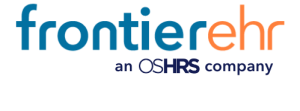Organizations are looking to systems that can build their employees’ performance. At Frontier e-HR, our performance appraisal software are built to support that! This series is to focus on different aspects of performance building and how systems can support organizations in that. First up – Individual Learning Plans!
Every good organization knows the importance of having regular performance appraisal reviews. A great organization knows that the most important is having a learning plan after the performance review. What was lacking in the performance review must be made up for in the learning plan. This ensures a spiral up of growth for the employee as well as progress for the organization as a whole.
That is why, there is an increasing emphasis on Individual Learning Plans (ILP). What is ILP and what makes it effective?
An Individual Learning Plan (ILP) is an employee directed planning and monitoring tool that customizes learning opportunities to support the attainment of goals.
How to create an effective ILP?
1. It has to be personalized
There might be generic needs that everyone in the organization needs. For example, if your organization launches a new value and there is a organizational wide course to develop all the employees in this value.
However, for your employees to be successful, learning needs to be personalized to them. Every person’s learning journey is different. Their needs are different, their learning pace is different, the way they learn is different.
Allow your employee to design their ILP. As a manager or supervisory, your job is to review and nudge your employee in the right direction if needed. An ILP should make the employee feel in charge of their own learning journey.
2. Employees must know their skill gaps
For an employee to know how to start designing their ILP, they have to be able to identify their skill gaps. Getting employees to plan their ILP shortly after their performance review is one way.
Other ways will include:
- Individual Gap Analysis: Let employees know the optimal skills required for their position and where they rank against that
- Career Development Matrix: Allows employees to forecast skill requirements based on their career development path
- Company/Department Objectives: Allows employees to align themselves with the company/department direction
With these, employees will gain insights to the skills they currently have and how to grow.
3. Employees must have resources to improve themselves
After planning, there must be action taken either by the employee or their manager. Having a directory of courses will allow employees to select courses that are directly related to the skills they want to grow in.
Allow your employees to filter the courses with a variety of options such as filtering it by skills, positions, age and categories. This allows them to narrow down the courses they can go for and focus.
4. It has to be dynamic
The way an employee’s performance goals might change over the year, is the same way their learning needs might change. An ILP should not be a one-time plan that sets in stone their learning for the entire year. An effective ILP is one that is flexible and reflects the company’s desire to adjust an ILP according to their changing needs.
Having Performance Improvement Actions (PIA) will also aid in the gradual improvement of skills for employees as they have responsibilities added onto them at an customized pace.
Regardless of how many performance reviews an employee goes through, true change only comes when there is a definite plan. If you want to implement an ILP for your organization or learn more, feel free to approach our team by contacting enquiry@frontier-ehr.com.







